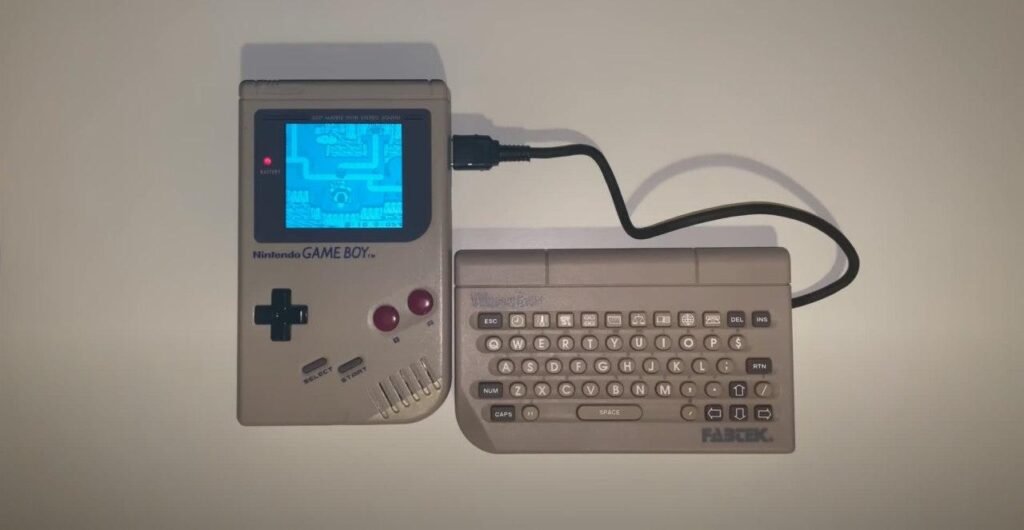A never-released accessory called “WorkBoy” for the Nintendo Game Boy which can transform the handheld gaming console into a full-fledged PDA has been discovered by gaming historian Liam Robertson. On a recent season of his YouTube series “Game History Secrets,” Robertson revealed the peripheral, considered missing for the last 28 years.
A simple keyboard that connects to the Game Boy through a Link Cable is the accessory, dubbed WorkBoy. WorkBoy has many built-in productivity tools, such as an address book, calculator, spreadsheet, book of appointments, world clock, calendar, and more. There are 12 applications in total, technically.

WorkBoy was trademarked in 1992, with Washington start-up Fabtek Inc commissioned to create the product and designed by the UK company Source Research and Development. Both companies are now extinct. In many 1990s gaming magazines, the peripheral was featured and also made an appearance at CES 1992. Not long after that, though, it totally
disappeared, never to be heard from again.
Robertson tracked down Source Research and Development founder, Eddie Gill, after months of searching. The primary designer behind the accessory was also Gill. Gill said the accessory was scheduled to launch for about $80 or $90 in late 1992 or early 1993. But Various problems hindered WorkBoy from ever hitting production.
According to Gill’s knowledge, there are only two prototypes of the ultra-rare Game Boy peripheral in existence; one is most likely kept somewhere by Nintendo, and the other is owned by Fabtek creator Frank Ballouz. With details on an unreleased product, Nintendo was not likely to be available, so Robertson contacted Ballouz.
Did The WorkBoy Worked?
Ballouz willingly decided to give Robertson the WorkBoy prototype to see if he could get it to function. Robertson attached the unit to many Game Boys of the first generation but was unable to get it to function. Although Ballouz did not remember that it needed specific software, they determined that a cartridge inserted into the Game Boy must have gone off.

Robertson was able to get the exact ROM he wanted in a quirk of fate to get the WorkBoy working. The code also happened to be used earlier this year in Nintendo’s “Gigaleak” Robertson flashed a blank ROM cartridge with the software, and the WorkBoy took flight and worked perfectly, sure enough.
The primary cause of the WorkBoy never going into production was a D-RAM shortage triggered by an explosion at a foundry in Japan as Robertson said. For a peripheral, it was often deemed too costly, costing just as much as the Game Boy itself. The design of the unit later influenced other gadgets, such as the Nokia 9000 series. And, of course, like all that the WorkBoy provided, modern smartphones are now having all that as a standard.

2 Comments
Pingback: Pokémon Red Is Still Being Played in Someone's Twitter Profile Picture - Craffic
Pingback: A YouTuber stuffed Christopher Nolan's 'Tenet' into Game Boy Advance cartridges - Craffic